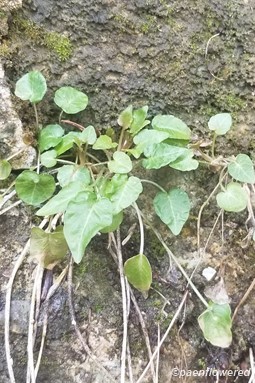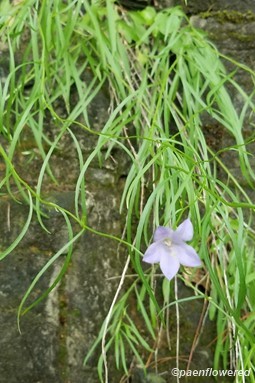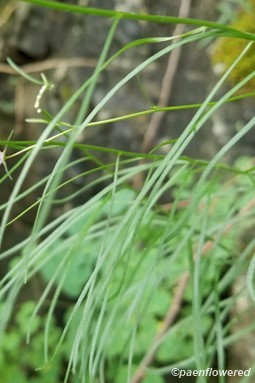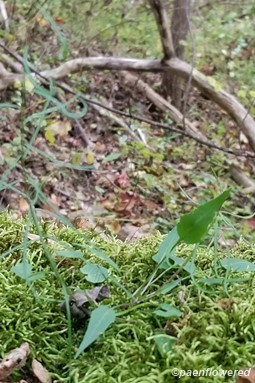Campanula rotundifolia
Beautiful blue bell mostly growing on rock ledges and cliffs
Campanula rotundifolia harebell
This common perennial member of the bluebell family is found in Southern Canada and Northeastern United States.
It has a wiry, hair-like stem and linear leaves, though the leaves at the base are rounded. The flowers are violet-blue in color and nod from the branch tips. The flower has five petals and five green sepals. The petals are papery thin and curved to form the 'bell'. The blooms are either solitary or in loose spikes.
Horizontal underground stems called rhizomes spread from the base of the plant, producing roots and shoots at short intervals. The plant grows 6-21 inches tall and is found growing in meadows, grassy places, on rocky slopes and in alpine areas. It can also grow on disturbed ground along roadsides and railroads and will do well in fixed sand dune areas.
The harebell is tolerant of a wide range of soil pH. It blooms from June to September. In Western PA, it is one of the latest blooming wildflowers. Bees are the primary pollinators of the harebell, but it may also self-pollinate. It is actually a circumpolar species, also growing in Northern Eurasia. It is also called the bluebell bellflower. In Scotland an old name for this plant is 'Witche's thimble'. It was once believed that witches could convert themselves into hares and it was bad luck to have one cross your path. The garden harebell (C. divaricata) sometimes escapes cultivation; it has flowers only on one side of the stem and heart-shaped basal leaves.
Habitat & Range
Infrequent on dry, rocky slopes; cliffs, ledges, limestone rock. Prefers full sun to light shade and well-drained sandy or rocky soil.
See distribution map at BONAP.
Range: Southern Canada and northeastern United States.
| EMP: | FACU |
|---|---|
| NCNE: | FACU |
Phenology
Flowers early June through August.
Characteristics
Plant Codes
S-rank: S4 (Apparently Secure)
G-rank: G5 (Secure)
Ecology
Bees are the primary pollinators. Syrphid flies visit the flowers for nectar.








Comments
Have you spotted this plant in your area? We'd love to hear about your experience! Share your comments or questions about the plant below. Comments are moderated before posting.